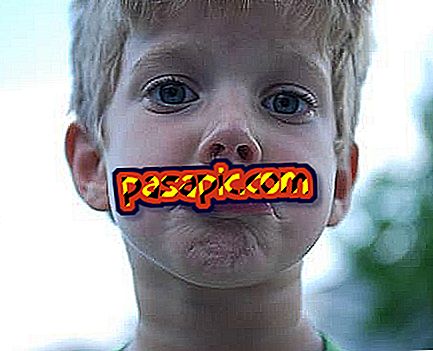How to identify a witch

Today we can not say that there are witches in society as it did in previous centuries where the Holy Inquisition sought nonstop witches to burn them. Throughout the more than 300 years that the witch hunt lasted, the ways and techniques to identify the witches varied markedly, but after the publication of the Malleaus Maleficarum everything was reduced to one: "If a woman is accused of witchcraft It's a witch. " Next we will give you some clues how to identify a witch .
Steps to follow:one
A sorcerer or a witch is a person who practices witchcraft . Although the typical image of a sorcerer or a witch is very variable depending on the culture, in the western world is particularly associated with a witch with a woman generally ugly and old with ability to fly mounted on a broom, as well as with the Aquelarre (place of witches) and with the witch hunt (search and identification of witches and witches).
However, this image of the classic witch mix reality with fiction, thus becoming authentic legends that have been part of children's stories, the darkest stories and the collective imaginary of terror.
But despite all this, the truth is that the "witches" in yesteryear, were simply women who used the properties of natural remedies (such as plants, flowers, stones, etc.) to make concoctions (the so-called "spells") and achieve a specific purpose. The knowledge that these women had about nature, made them go one step further, in contact with everything supraterrenal, the world of energies and the intangible, for this reason, they were considered evil
two
So, if you want to identify a witch, the first thing we have to highlight is that that image that comes to your mind (women dressed in black, with a hat and flying broom) does not exist now or has ever existed, it has only been a legend that has formed around these women who practiced spells and spells.
Currently, we would not use the word "spells" to refer to witches but we can talk about "natural remedies", "miracle remedies" which is what, in the end, witches have always been doing: taking advantage of the healing properties of the nature to create mixtures capable of different virtues.
3
The connection of witches with nature makes these women usually wear a series of amulets that contain concrete properties. This is nothing more than affiliating with gemalogy, that is, the use of stones and their energy as protectors or as health callers.
Currently, there are many people in the world who believe in the powers of stones and wear them on pendants, on slopes or hang them on the door of their home. Now this does not look strange or evil, but in the Middle Ages (witch-hunting era), any power linked to something material was considered heresy and betrayal of God since, only, the divine energy and the power of God He was able to provide us with good health and prosperity.

4
Another way to identify a witch is to look at the environments in which she moves and the interests she has. He thinks that, as we have already mentioned, these people are linked to the spiritual world and, therefore, they are likely to believe in the occult sciences, in esotericism, in the reading of letters, and so on. They believe in another world that is not visible through our senses and, therefore, tend to move through more esoteric sectors that also believe in the power of human and natural energy.
5
Therefore, it is important to clarify that those considered "witches" in the Middle Ages were no more than people linked to the world of spirituality, nature and free will. They used to be women belonging to the lower classes of society who were looking for remedies to calm their discomfort or help their families thanks to the healing properties that nature provides.
These practices are now widespread in society and there are a variety of natural remedies to care for conditions or aesthetic problems, in addition to the branch of medicine known as Naturopathy. The contact with our spirit and the world of energies is now also more alive than ever and that is why practices such as meditation, yoga, spiritual retreats, etc. have been extended, something that in the Middle Ages would have been treated as witchcraft.


